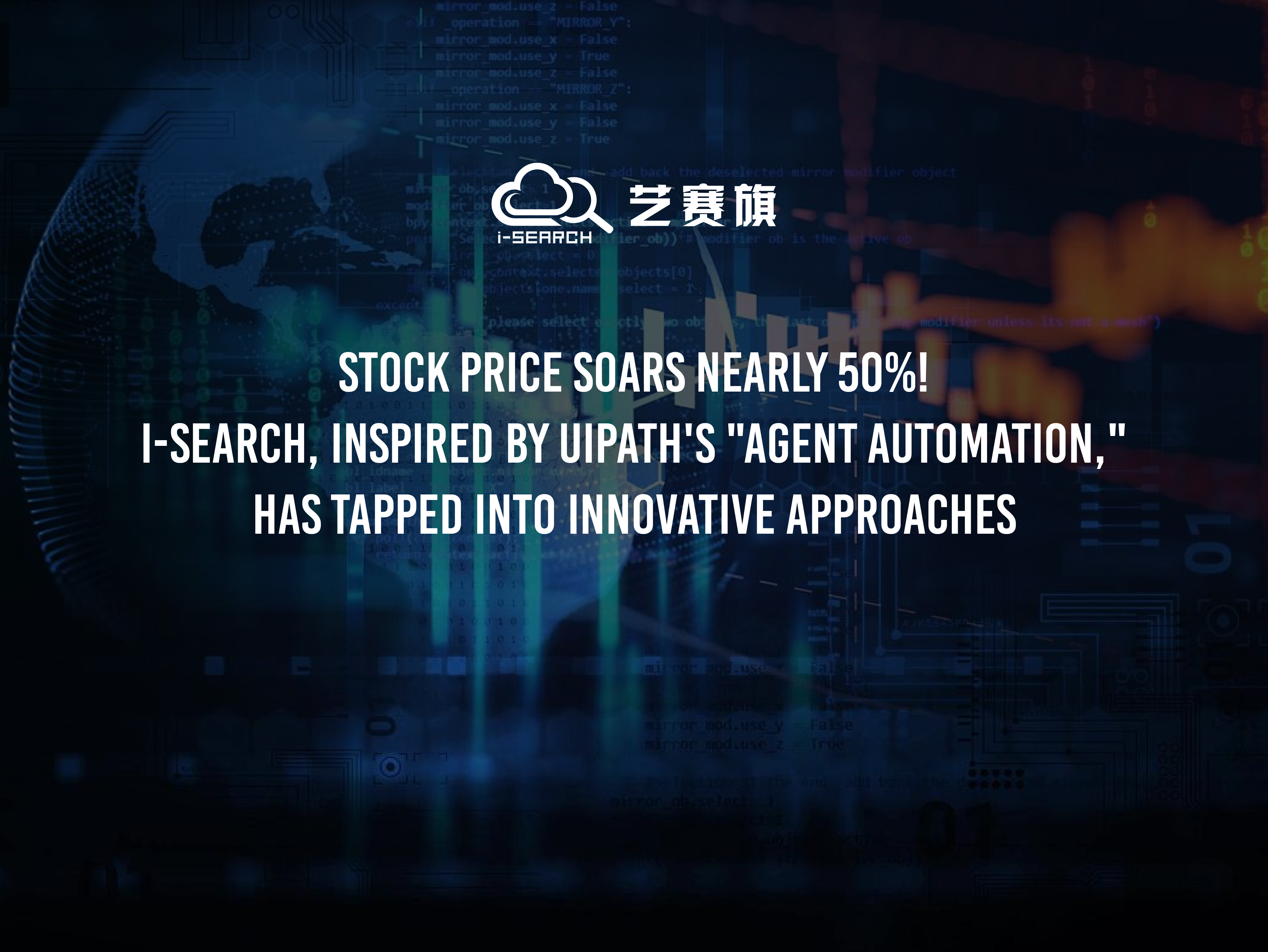When uipath's share price soared nearly 50% in two weeks to a four month high, the entire technology circle was asking: why was this global RPA (robot process automation) giant suddenly robbed by capital? The answer lies in its deep cooperation with openai and NVIDIA.
This wave of operation not only makes the rpa+ai track stand in the spotlight again, but also points a clear way for Chinese Enterprises: in the era of large models, the automation platform is not a replaced "tool man", but a "super bridge" connecting AI and business. The domestic i-Search has already stepped on this rhythm and given its own solution.
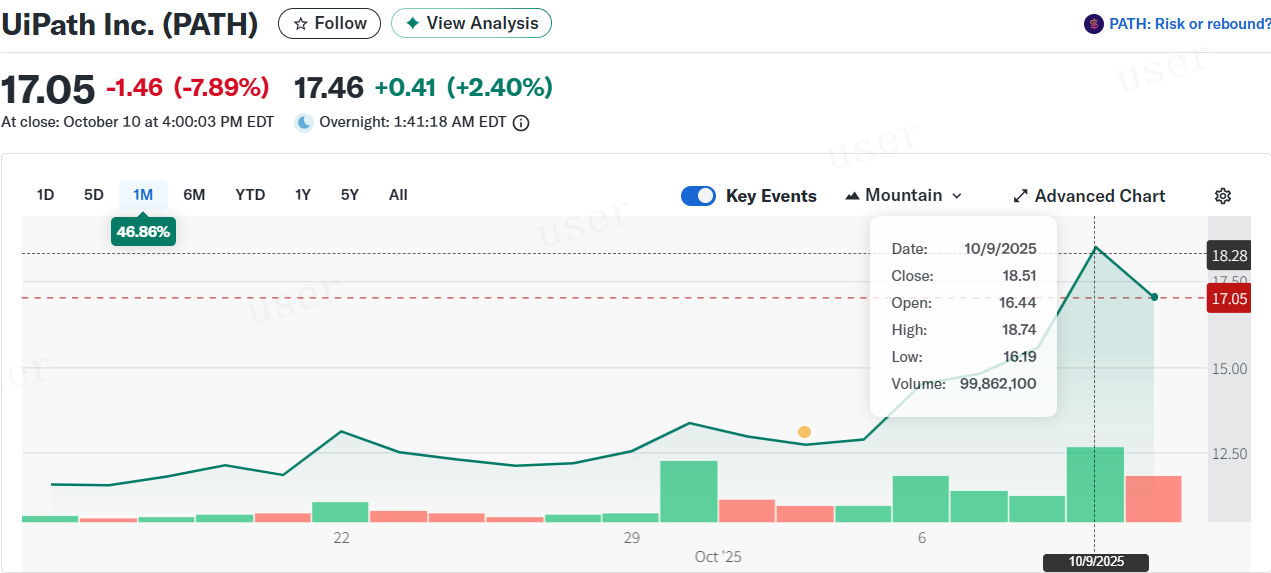
Not AI instead of RPA
But the two are "welded together"
To understand the rise of uipath, we must first jump out of the misunderstanding that "big model will kill RPA".
In the past year, many people felt that since the large model can understand natural language and generate code, does RPA still need to do process choreography? However, uipath has proved with practical actions that the thinking power of the large model requires the implementation of RPA; The process power of RPA requires intelligent upgrading of large models. The two are not a substitute relationship, but a combination of soul and bone.
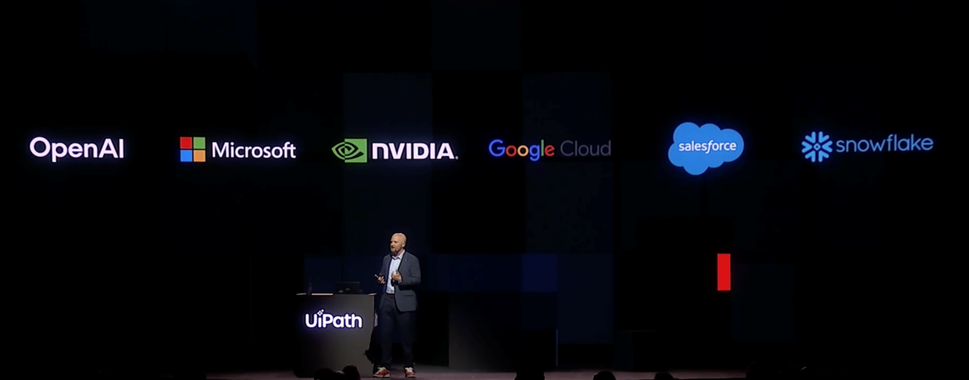
The essence of the cooperation between uipath and openai is to build a set of enterprise level agent operation system.
From the product evolution path of uipath, we can see that "ai+automation" has developed from a single technology in the early days to a new stage of symbiosis and collaboration among agents, robots and people. The workflow not only integrates machine intelligence, but also highlights the value of human creativity, realizing the multiplication of digital productivity.

Where are the opportunities for Chinese enterprises when the global track is hot?
In the wave of deep integration of RPA and AI, Chinese enterprises are facing multiple strategic opportunities by virtue of policy dividends, technological innovation and local market advantages.
China's rpa+ai market is in a period of rapid growth. According to IDC data, China's rpa+ai solution market reached 3.15 billion yuan in 2024, a year-on-year increase of 27.4%, significantly higher than the global average growth rate.
As an important part of the "agents+robots+people" choreography platform, RPA can greatly improve the execution ability of agents in complex business processes with very low investment, and is currently an ideal agent expansion tool. How to combine RPA and agent to improve enterprise operation efficiency is one of the most frequently asked questions by enterprises that have adopted RPA.
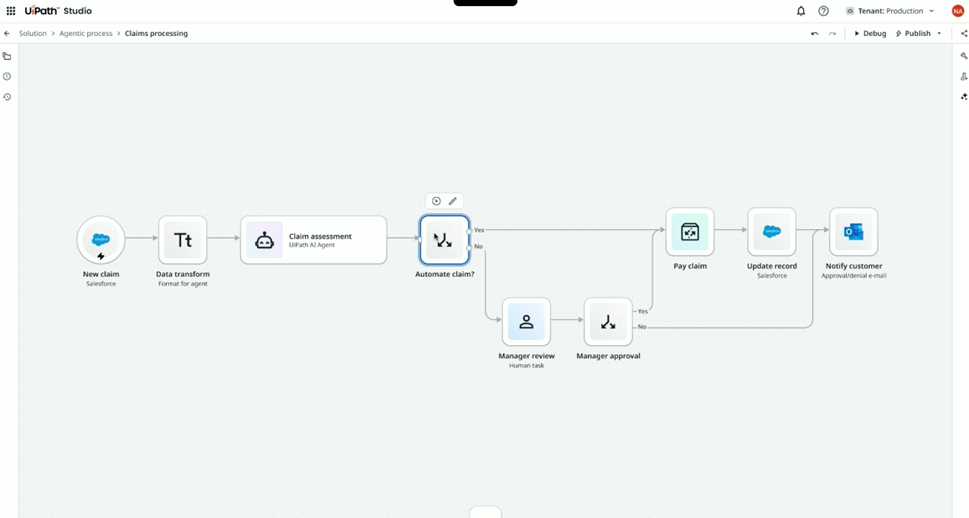
Another important point is that AI enables RPA to actively think about how to do a thing. Imagine that the previous RPA was based on predetermined rules, just a wooden man who would only clap his hands to welcome guests. Now the RPA integrated with agent will not only clap hands to welcome you, but also ask your purpose and take you to the restaurant to help you order. From this point of view, RPA in the future has great imagination.
What i-Search and other local enterprises are doing is to lower the threshold for the use of AI agents. For example, the complex model access and process arrangement are made into "out of the box" components; Use visual designer instead of code development, so that business personnel who do not understand technology can also build agents. This trend of inclusive will make China's agent market larger than that of Europe and the United States.
Making ai the soul of automation
Making automation an intelligent muscle
In the domestic rpa+ai track, i-Search has always focused on the direction of automation technology that it is best at, and adhered to the route of "automation design ability+ai component access", just stepping on the development trend of rpa+ai. I-Search's two core products are aiming at the actual needs of Chinese enterprises and building an agent platform that better understands the needs of enterprises.
-
Agent automation platform: out of the box model components
Many enterprises want to try the agent, but they give up when they hear that they want to connect API and debug model parameters. After all, not every company has AI engineers. I-Search's agent platform is to solve the problem of "difficult access". Through out of the box model components and pre integration of mainstream large models, customers can use them without developing from scratch.
For example, the platform has been packaged with language understanding components, code generation components, visual identity components and process components. If an enterprise needs to be a contract review agent, it only needs to put these components together like Lego without writing code line by line.
More importantly, the platform also supports model switching. For example, an enterprise originally used model a to process invoice recognition, but found that the accuracy was not enough. It wanted to change to model B. in the platform of i-Search, it only needed to change a parameter in the component without rebuilding the whole process.
This flexibility is very practical for Chinese enterprises that often adjust their business. Enterprises do not need to access the model from zero, nor do they need to get through the complicated API by themselves, which is in line with the hot trend of the industry: the RPA platform should not only make process arrangement without brains, but also be able to "think intelligently and judge automatically" in the business process.
-
Magic Automator: a new generation of ai+automation Designer
The essence of the traditional RPA designer is to imitate user operations. For example, "open Chrome browser → enter web address → click button" needs to be set step by step, and it will fail in case of page change, which must be debugged by IT personnel. This is also why it was difficult to promote RPA in the past: business personnel wanted to use it, but could not operate it; It staff can operate, but do not understand the business.
I-Search's magic Automator (automated magician) directly changed the design logic from "how" to "what". The business staff only need to say the requirements, and AI helps you generate processes and automatically repair problems.
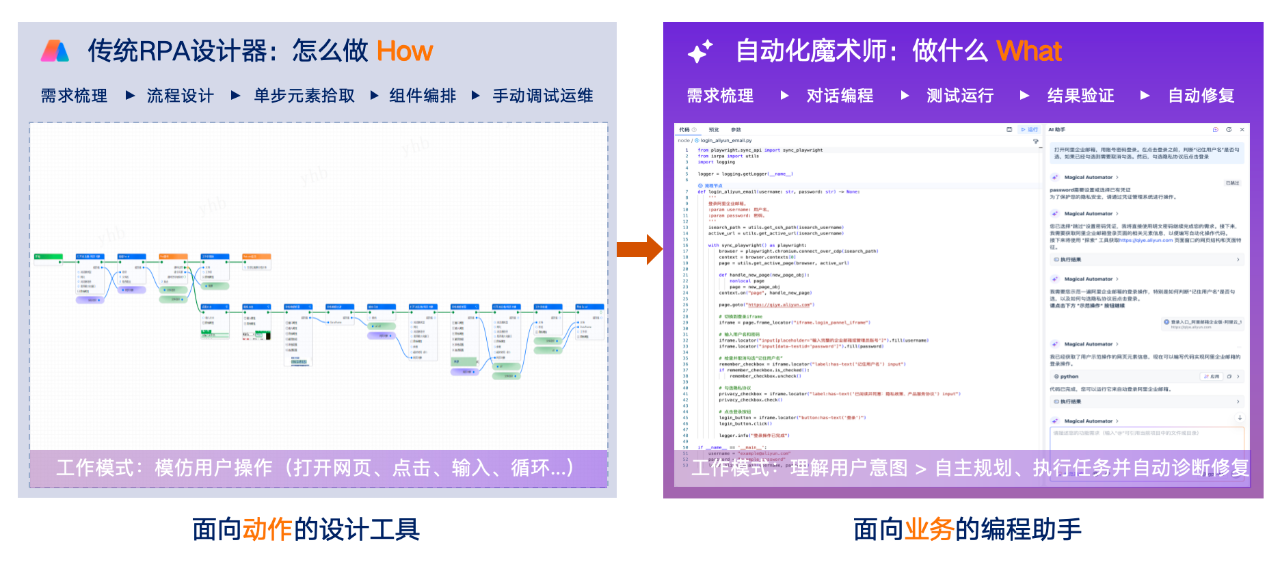
For example, the financial staff want to be an agent that automatically counts the reimbursement amount of the Department. Instead of learning process design, they just need to enter "collect the reimbursement form from the enterprise wechat at 9 a.m. every day, count the total amount, generate excel and send an email to the Department Manager" in the magic Automator. AI will automatically analyze the requirements and generate the process.
When writing process scripts, it will get Ai assistance, which not only allows users to build automated processes in a more intuitive and understandable visual way, but also automatically suggests the optimal large model components, dynamically adjusts logic, and predicts exceptions in the process nodes.
This ability of "ai+automation" has greatly reduced the threshold for the use of agents. Just like writing code with cursor, business personnel do not need to understand technology. They only need to focus on business requirements, and AI can help them solve the technical details. I-Search calls it the "idea era of automated design" -- in the past, scripts were manually dragged. Now, ideas are processes, and designs are written, optimized and generated.
From the technological development path of yisaiqi, we can clearly see the core logic behind it - giving automation "soul" with AI, tamping intelligent "muscle" with automation, and always focusing on the core value demands of "enterprise can use, easy to use and sustainable use". Based on this, yisaiqi takes the mission of "making simplicity more professional and making profession more simple" to create a truly landing and growing intelligent automation platform for thousands of industries.
Not "substitute"
But "let people do more valuable things"
When we talk about "ai+automation", it is easy to fall into the anxiety of "machines replacing people". However, from the practice of uipath and i-Search, the integration and collaboration of agents, robots and people can let them give full play to their respective strengths and maximize the efficiency of digital productivity.
One day in the future, we may see: in the intelligent manufacturing workshop, the agent automation platform schedules tens of millions of RPA robots in real time, and optimizes the production link together with the AI model, so that the birth of each product can accurately match the global demand; In the operation center of the smart city, the automation system is linked with multi-modal agents to dynamically balance energy distribution, traffic flow and public service resources, so that the city can adjust itself like an organism; Even in the frontier fields of deep space exploration and quantum computing, the intelligent automation platform will become a "digital partner" for researchers. RPA and AI will work together to help humans break through the cognitive boundary.
This is not the imagination of science fiction, but the inevitable evolution direction of technology integration. The practice of technology enterprises such as yisaiqi makes intelligence no longer a "luxury" for a few enterprises, but a productivity engine within reach of thousands of industries. With deep insight into the needs of Chinese enterprises, the deep integration of AI soul and automation muscle will be transformed into specific practice to promote the high-quality development of digital economy.
And this technological revolution about efficiency and creativity has just begun.






 Enterprise Platform
Enterprise Platform
 Discovery and Evaluation
Discovery and Evaluation
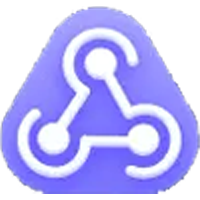 Automation
Automation
 Industry Solutions
Industry Solutions
 General Solutions
General Solutions
 Partnership
Partnership
 Ecosystem Alliance
Ecosystem Alliance
 Consulting Services
Consulting Services
 Community
Community
 Company Introduction
Company Introduction
 News and Updates
News and Updates
 Contact Us
Contact Us
